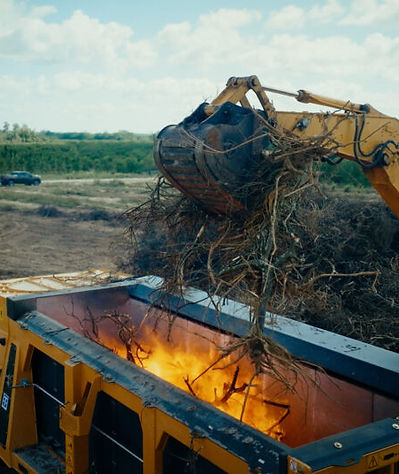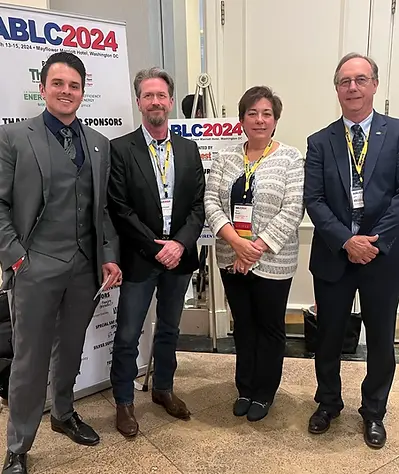
In The Press
Dedication. Expertise. Passion.

The Tigercat is set up in a decommissioned orange grove. “We cleared the whole thing in three days,” said Zach Farr, CEO of Biotech Applied Research, describing the first phase of work on the decommissioned Valencia orange grove. The operators say it reaches about 2,000 degrees and can char a tree in roughly 30 seconds — and because it is portable, crews can process debris where it stands rather than hauling it long distances. Fans create a “curtain of air” over the top, keeping most of the emissions inside. The burnt wood is mixed with water and comes out on a conveyor. Operators can adjust the density or size of the chips depending on their application.
Florida citrus farmers test on-site biochar production to cut burning and boost soil health

Biotech Applied Research (BAR) in Avon Park has commenced daily production of 85% organic carbon biochar, marking a significant development in sustainable land management. Following a successful week-long trial in May, BAR is now utilizing the 2025 Tigercat 6040 Carbonizer, a first for the Southeast and Florida in biochar production. This $1 million investment underscores BAR’s commitment, supported by federal, state, and local initiatives, to address critical environmental and agricultural challenges in Florida. Their mission focuses on revitalizing rural communities, restoring degraded soil, and recharging the aquifer, while simultaneously fostering the adoption of alternative crops like hemp and bamboo among local farmers.
Florida-based Biotech Applied Research pioneers biochar production, transforming waste, revitalizing land

Farming is in Biotech Applied Research CEO Zack Farr’s blood “It’s everything, being able to be outside and in God’s country and just not be behind a cubicle,” said Farr. He is a third-generation citrus farmer from Avon Park. He grew up working in the groves, but now, many are just piles of wood.
Nonprofit making Biochar with first mobile processing facility in Florida

Based in Highlands County, BAR has built a nonprofit model that brings mobile carbonizers directly to the carbon source. BAR has been working for years creating the right collaborations with farmers, municipalities and water restoration project developers to convert the tree waste into biochar on site, then apply it back into the soil or install it in water filtration projects. This closed-loop, carbon-smart solution reduces waste, creates local jobs and revitalizes rural communities with new economic opportunities.
Old and dying citrus groves being converted into tool for water and soil restoration: biochar

“It’s a very hefty investment for our group. The risk is on us. All the risk,” Farr said. “We’re losing 120 acres of agricultural land a day. That’s 2.2 million acres by 2070. A lot of that is citrus and then you’ve got forests. ” This process hits “all the pillars” being more environmentally friendly. Farr added their challenges are just “operational challenges” where the prime directive is to figure out new methods to make production safer, quicker and more efficient.
Providing
an Alternative

“We still love citrus, we still have citrus,, We need to see if we can try to do more to help replenish and revitalize our soils and I think maybe the biochar will do that. It’s something that can benefit farmers and it’s not too expensive to apply because we gotta be able to make a net profit.” The ultimate goal is to see how the industrial hemp fares in their biochar and compost mixture. Biochar is 95% activated carbon that can absorb six times its weight with a 100-year lifespan, resulting in a significant cut back in irrigation.
Planted at dawn: Biotech Applied Research waits for first batch of industrial hemp
.webp)
Jeff Williams is a fourth-generation citrus farmer and Avon Park native. He grew up in Highlands County in the citrus business in its golden age, but is now, like many others throughout Florida, pursuing options to maintain their way of life with impending greening. Williams is the owner of J.W. Harvesting in Avon Park, roughly 100 acres of citrus groves that used to yield much more of Florida’s idiosyncratic citrus. Just over a decade ago, before greening swept across Florida’s groves in 2013, semi-trucks hauled day and night.
